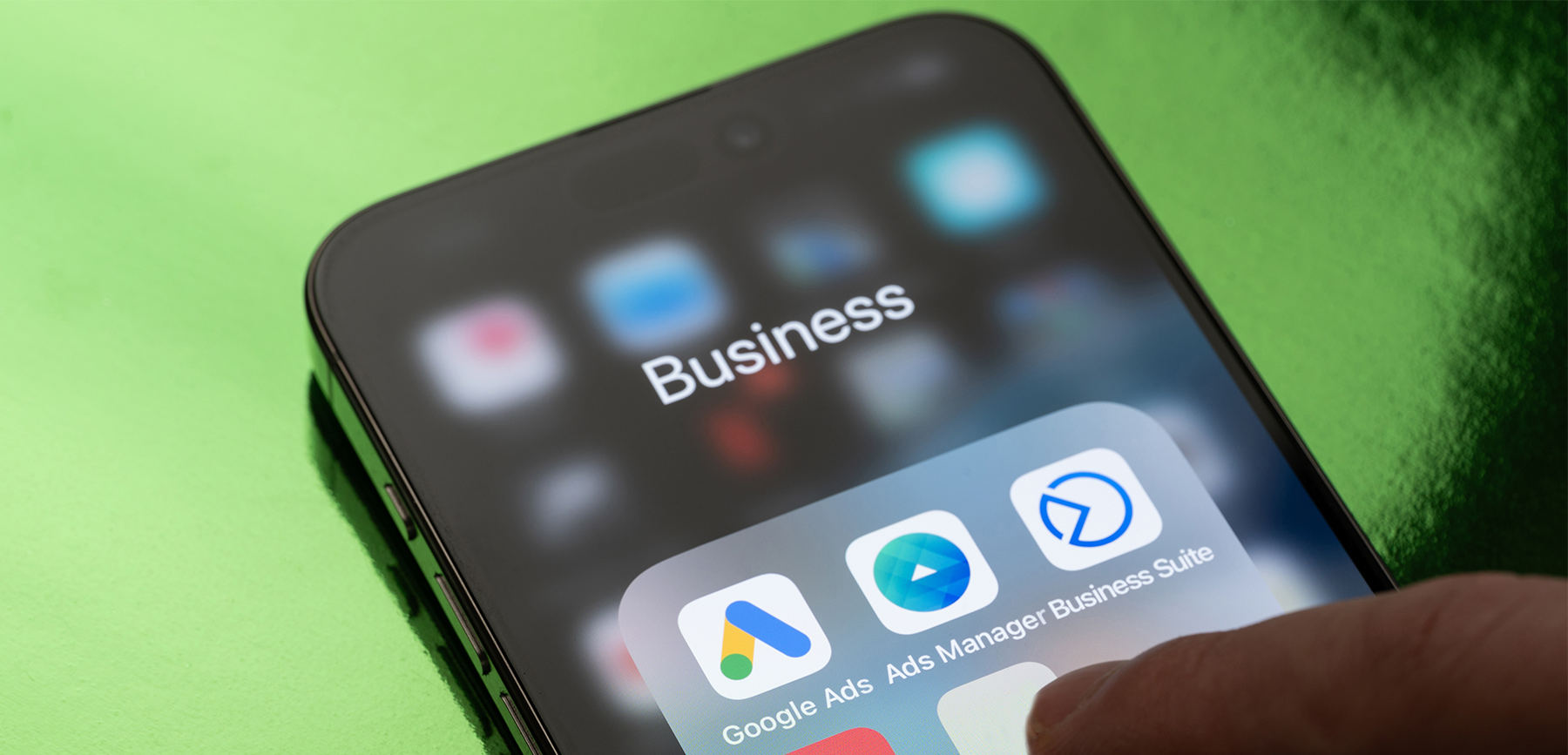
Fix Common Meta Ad Mistakes with Better Creative, Targeting, and Testing | Comprehensive Meta Ads guide for local businesses to improve results with smart objectives, A/B testing, and budget optimization
Meta Ads are among the most impactful marketing tools because of their extensive reach across top social media platforms, including Facebook, Instagram, WhatsApp, and Threads. In June 2025, Meta reported that its Family of Apps averaged 3.48 billion users, a 6% increase year-over-year.
Despite this massive audience, many local businesses struggle to achieve cost-effective results. According to SaveMyLeads, the average cost-per-click (CPC) for Meta Ads is $0.72, and the average click-through rate (CTR) is just 0.9%.
Although these numbers can still produce meaningful results, there’s plenty of room for improvement. By identifying your mistakes and how to fix them, you can maximize your ad spend, generate more revenue, and gain an edge over competitors on these platforms.
Let’s take a closer look at the most frequent mistakes local businesses make with Meta Ads, and how you can fix or even avoid them altogether.
Common Mistakes
Poor Ad Creatives
The ad creative is the most important element of any Meta campaign. At the 2023 Meta Performance Marketing Summit, the company revealed that 56% of all ad outcomes are directly attributable to creative, according to VidMob.
This means that if an ad underperforms, the first step is to analyze the creative and make necessary changes. Since you only have a fraction of a second to capture attention while competing with countless other ads, your creative must stand out.
Focus on eye-catching visuals with a captivating message that aligns with your goals. Step into the mind of your audience, identify what resonates with them, and find ways to differentiate yourself from competitors. Gathering feedback is also invaluable, and in many cases, hiring a professional designer or videographer can be a worthwhile investment given the impact creative has on performance.
Incorrect Objectives
Meta platforms offer several campaign objectives, such as “Sales,” “Traffic,” and “Engagement.” Choosing the right one is essential, especially for local businesses that have limited resources.
Your objectives should directly support your overall business goals. If you are looking to generate leads, Meta offers a “Leads” objective. For increased traffic to your website, choose “Traffic.” If you need people to install your app, use the “App” objective. Familiarize yourself with all of Meta’s objective offerings, and you’ll have a much more efficient campaign.
Ad Fatigue
Even the best ad has an expiration date. When users see the same ad repeatedly, its message loses impact, and they begin to ignore or scroll past it. Key indicators of ad fatigue include rising costs and declining click-through rates.
To prevent this from occurring:
- Proactively create new ads for upcoming campaigns.
- Rotate creatives regularly with fresh images, formats, and headlines as performance dips.
- Run multiple versions of an ad simultaneously to minimize overexposure.
- Retarget existing ads toward new demographics, locations, or interests.
- Experiment with formats like carousels, Reels, and videos to deliver more engaging, interactive experiences.
Evergreen ads can also be reintroduced after some downtime, which helps reduce creative costs. However, they typically won’t perform as strongly as new ads, so they should be closely monitored.
Misguided Target Audience
If you’re seeing low engagement on an otherwise strong ad, the issue may be poor audience targeting. This is an easy mistake to make with Meta, as they offer extensive audience targeting tools that some local business owners either overuse or misuse.
Over-segmentation often occurs when business owners narrow their audience so much that they exclude valuable potential customers. On the other hand, some businesses go too broad, wasting ad dollars by reaching people who are unlikely to ever engage.
If you’ve already gathered research and data on your ideal customer, apply that information to your campaigns. If you have yet to collect this data, it would likely prove beneficial in the long run to invest in identifying your ideal audience. If you’re still not seeing the results you’re looking for and believe it’s the fault of the target audience, test another and compare the results.
Unoptimized Budget Strategy
A major benefit of Meta Ads is the freedom to choose your budget. However, it can quickly turn into a disadvantage if your budget strategy isn’t managed and adhered to properly. Many local businesses make mistakes by not setting a proper budget and under- or overspending to achieve their goals, while others don’t adjust their spending over time based on performance.
To avoid this, start with a defined budget and maintain it until you’ve gathered enough performance data to make informed adjustments. From there, actively optimize your spending across ads, ad sets, and campaigns to maximize results.
Experimenting with different budget levels can also yield insights. You may find that lowering spend doesn’t harm engagement enough to affect sales, or that increasing spend significantly boosts results. Keep an open mind and monitor your budget closely.
Lack of A/B Testing
Guessing may be the easier way to find the correct audience, ad creative, and budget, but it’s also much more expensive to choose this route. A/B testing takes a little more work, but the results will prove to outweigh the effort.
A/B testing doesn’t have to mean trying out different ad creators or new messages. Simple changes to the headline, call-to-action (CTA), or image can be enough to massively improve effectiveness.
When testing different variables, be sure to choose just one at a time, as testing multiple variables won’t make it clear which element had the biggest impact. Allow campaigns to run long enough to collect accurate data, and focus on key metrics such as conversions and cost per result.
Finally, remember that optimization is never finished. Even with strong A/B testing, you should continue experimenting as the advertising landscape evolves. There’s no such thing as a “perfect” ad, but striving for continuous improvement ensures your campaigns perform at their highest potential.
Not Monitoring Performance
It’s important to reiterate that tracking the performance of your campaigns regularly is vital to the success of your marketing efforts. Meta makes monitoring easy, but it’s up to you to establish a consistent schedule, whether daily, weekly, or otherwise, to stay on top of results.
Beyond reviewing your ads, stay up to date with Meta’s latest features to ensure you’re maximizing what the platform offers. Business blogs, industry news outlets, and webinars are excellent resources to help you remain current.
Slim Variety of Creative Formats
With so many creative formats available, why would you limit yourself to just one? Different formats resonate with different people, so testing out several could connect with certain audiences more effectively.
Rotating between static images, Reels, slideshows, and other content types also helps avoid ad fatigue and keeps your content interesting. If testing shows that two or three formats deliver the best results, focus on those, while remembering that digital trends evolve. Revisit previously unused formats periodically to see if they become more effective over time.
Best Version Media Can Help
At the end of the day, your goal is to reach as many potential customers as possible, convert them into paying clients, and do so cost-effectively. Best Version Media can help you achieve this with bundled, geo-targeted display ads and social media campaigns.
In addition, BVM provides listings, reviews, and reputation management to help boost your online presence, all from one simple dashboard.
Let BVM help your local business maximize its marketing budget and drive more revenue.
FAQ: Mistakes Local Businesses Make with Meta Ads
What are Meta Ads?
Meta Ads are advertisements displayed on Meta’s platforms like Facebook, Instagram, and Messenger. They leverage user data to target specific audiences based on interests, demographics, and online behavior. Meta Ads offer various ad formats, targeting options, and performance measurement tools to help businesses reach their desired audience and achieve their marketing goals.
How do I make a Meta Ads account?
To create a Meta Ads account, set up a Meta Business Manager account through your personal Facebook profile. The Business Manager acts as a central hub for all your assets, including your ad account, Facebook pages, and Instagram profiles.





